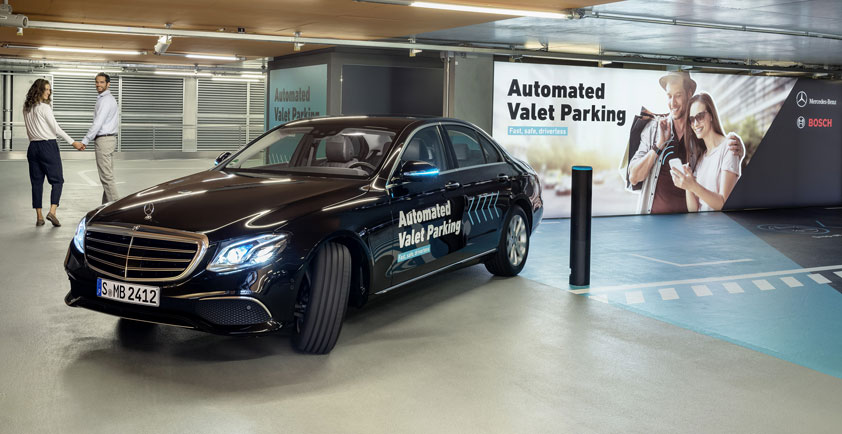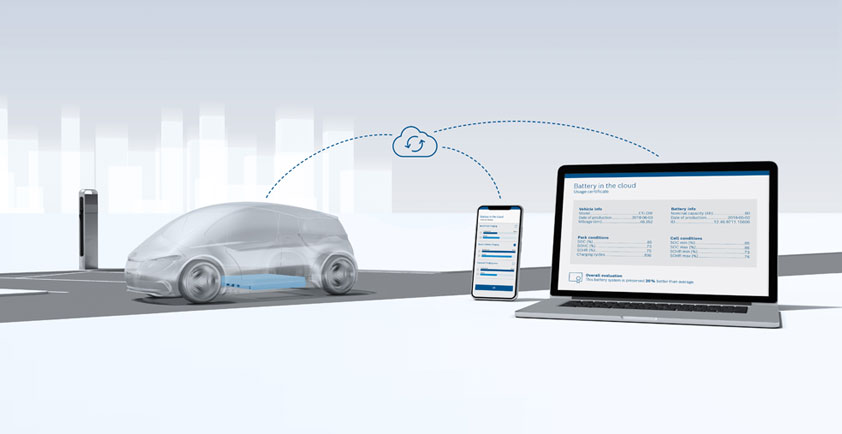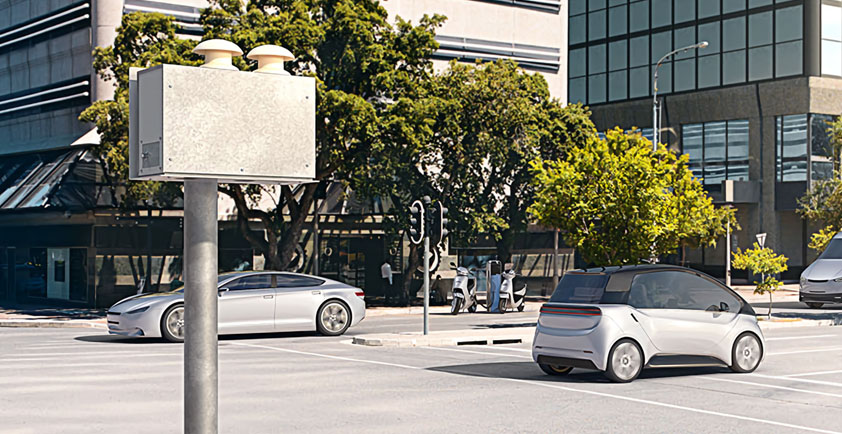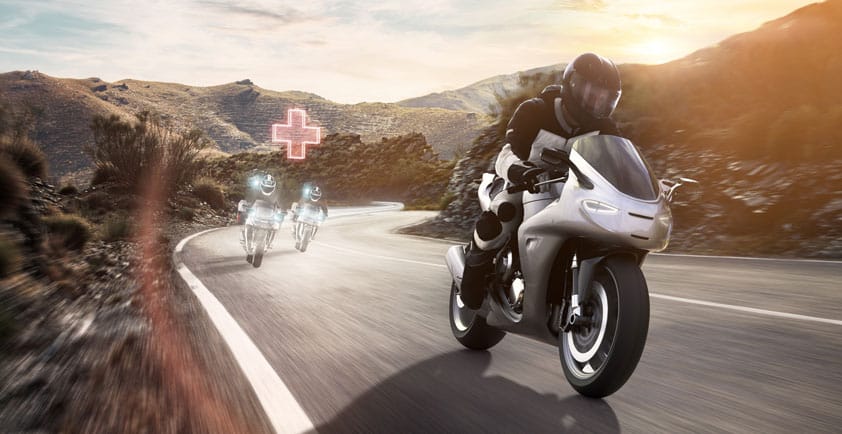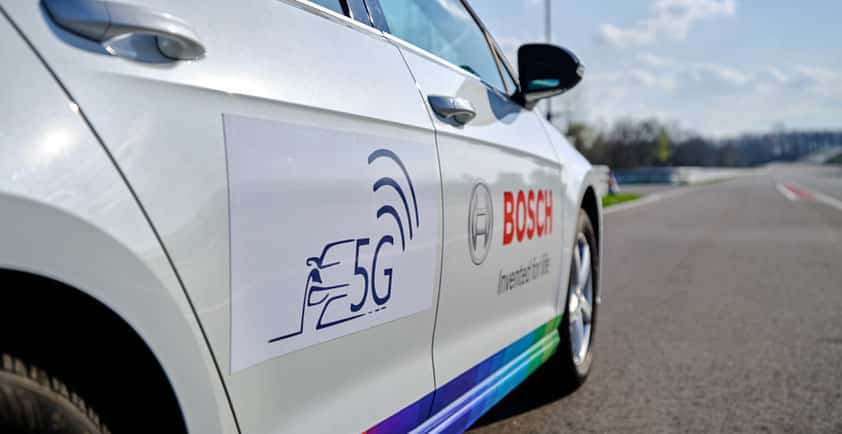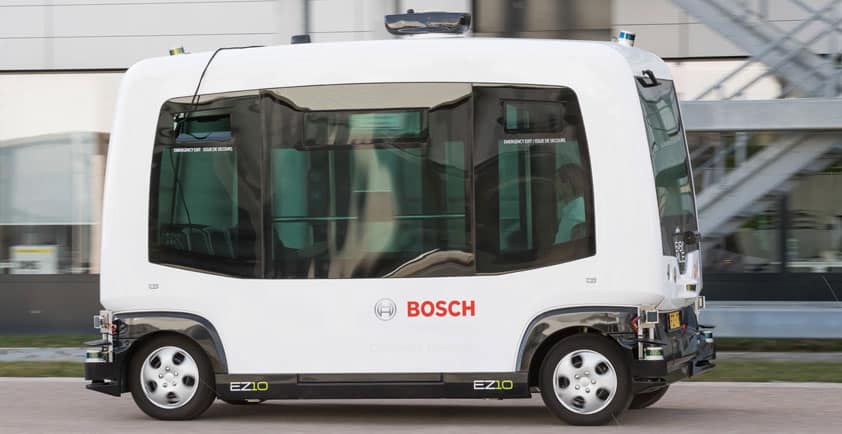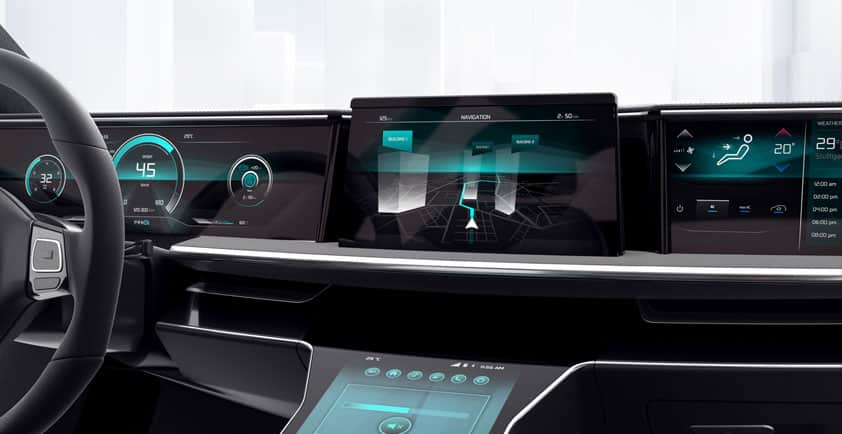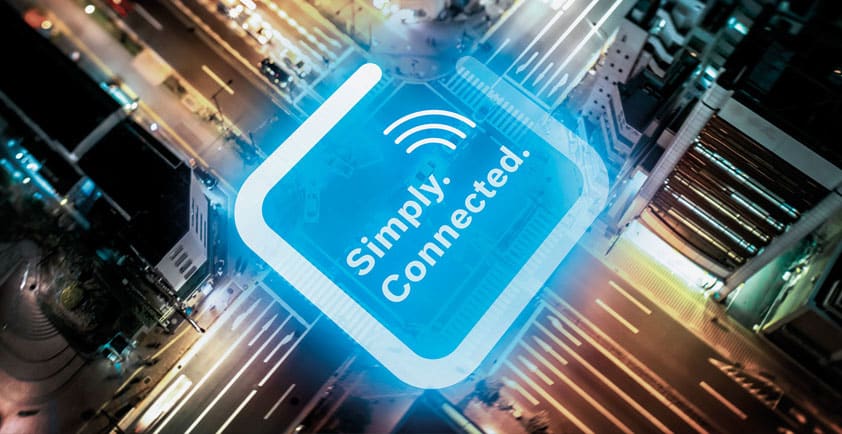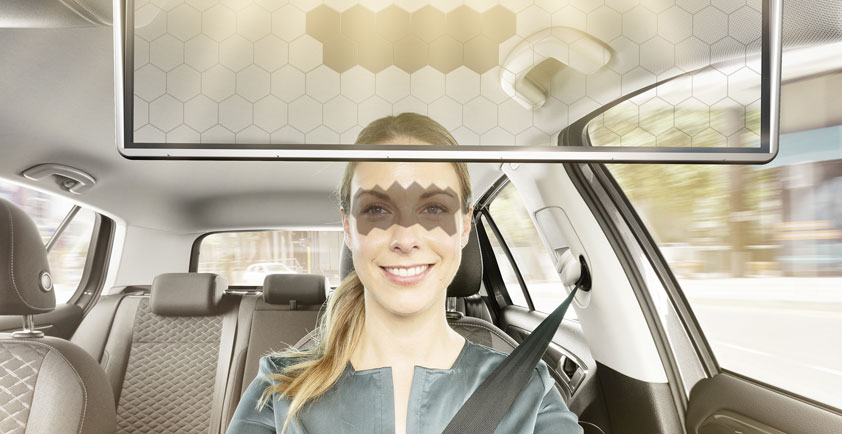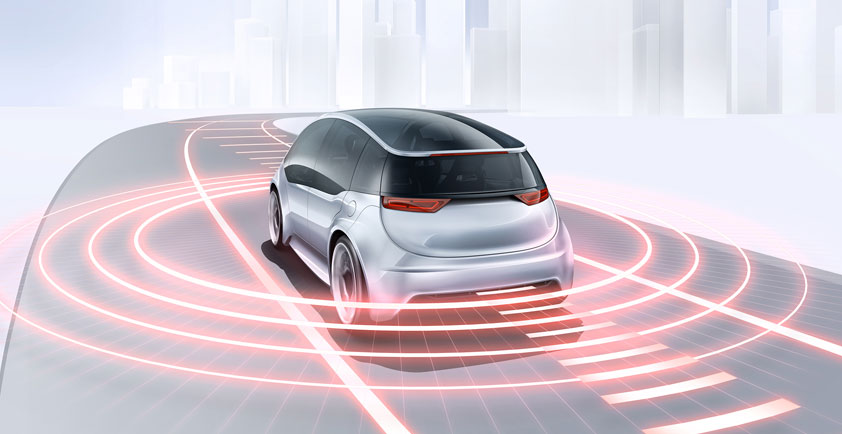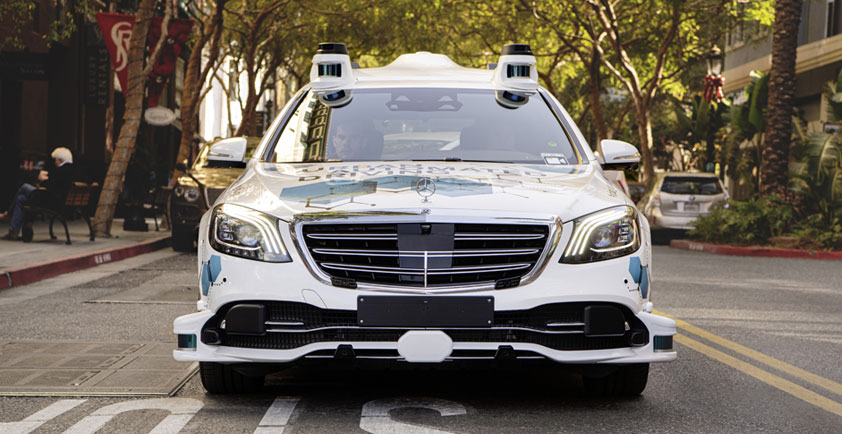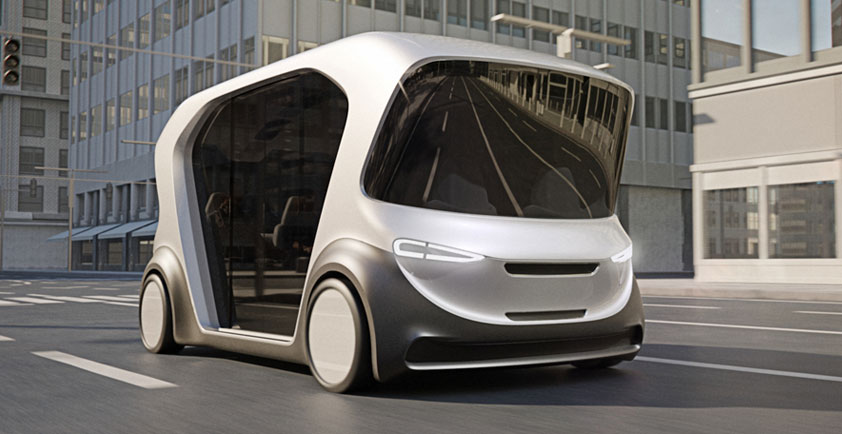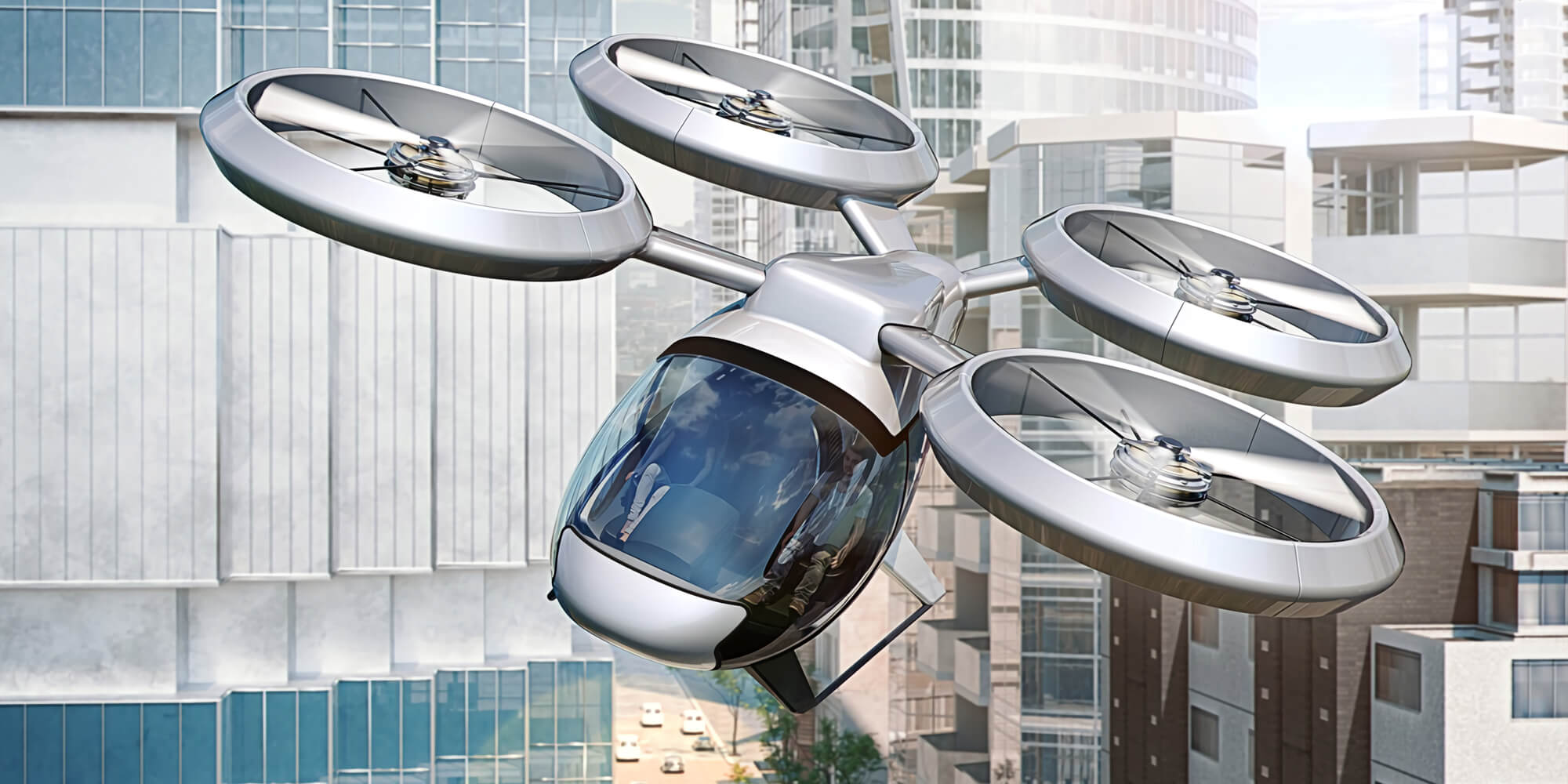
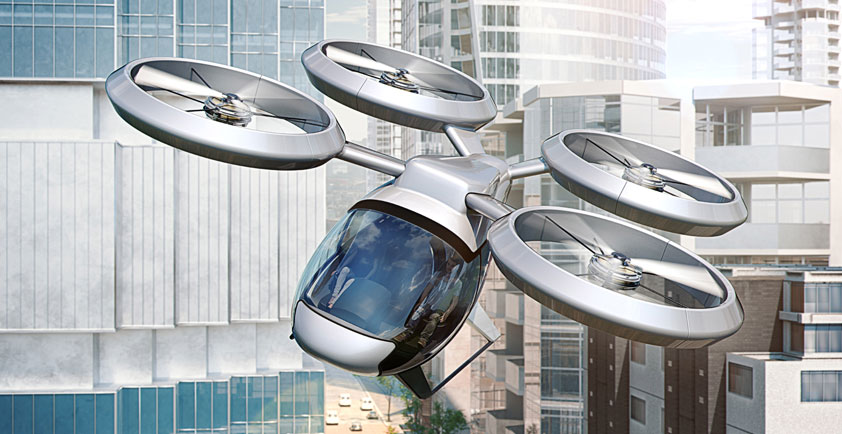
RESEARCH ALLIANCE DEVELOPS SENSOR SYSTEMS FOR AUTONOMOUS FLIGHT AND DRIVING
Innovative microelectronics cut energy consumption by 90 percent
>> A new semiconductor production method aims to maximize energy efficiency while using components with advanced computing power.
>> Bosch is the German consortium leader of the publicly funded OCEAN12* project with 27 partners across Europe, 14 of them in Germany.
Stuttgart, Germany – Mobility options in cities are becoming more and more diverse. People go by foot, bike, or e-bike, take buses, trams, or trains, drive their own cars, and in the future will even travel in driverless cars. There are also new options for flight: in conurbations, autonomous flying taxis or drones could transport people or time-critical goods and medications. All these applications require powerful sensors and control systems that save as much energy as possible. This is precisely where the publicly funded OCEAN12* project comes in – a pan-European collaboration of 27 partners from the fields of semiconductor technology, electronics, aerospace technology, and automotive technology. Bosch heads up the German consortium, which consists of 14 organizations. The project partners will be working together up until the end of 2021 to develop various especially energy-efficient components that can collect and process data from the surroundings of vehicles and aircraft. These include surround sensors such as cameras and lidar or radar sensors, as well as microprocessors for processing data. The electronics translate the collected data into commands for downstream components – for example, braking or steering a car or controlling the propulsion of a flying taxi.
"The OCEAN12 project’s objective is to ensure that new sensor systems for future mobility concepts consume up to 90 percent less power than today’s systems. ” Dr. Tilman Glökler from Bosch"
Comprehensive research needed
Development in the OCEAN12 project is based primarily on Fully Depleted Silicon On Insulator (FD-SOI) technology from the OCEAN12 project partner GlobalFoundries. This method of semiconductor production involves adding an ultrathin layer of insulator to reduce what are called leakage currents, resulting in lower energy consumption and higher computing speed. Based on this technology, the research alliance partners can subsequently develop components that offer an optimum combination of maximum energy efficiency with advanced computing power. “The OCEAN12 project’s objective is to ensure that new sensor systems for future mobility concepts consume up to 90 percent less power than today’s systems,” says Dr. Tilman Glökler from Bosch, coordinator of the German OCEAN12 consortium. In addition, the new technology makes it possible to build particularly small sensor systems, as sensors containing high-performance evaluation circuits can be integrated as a system on a chip (SoC). “Energy-saving sensor systems are indispensable for automated driving and flying. As we apply our expertise in microelectronics to the OCEAN12 project, we are gradually moving closer to this goal,” Glökler says.
OCEAN12 facts and figures
Funding for the OCEAN12 project (worth 103.58 million euros) comes from the European Union and national organizations. In Germany, the Federal Ministry of Education and Research and the state of Saxony provide financial support. Together, all the sponsors will contribute some 48 million euros over the course of the project from mid-2018 to the end of 2021. The German consortium includes Airbus, Audi, Bosch, and GlobalFoundries as well as numerous SMEs, research institutes, and universities.
* OCEAN12: Opportunity to Carry European Autonomous driviNg further with FD-SOI technology up to 12nm node
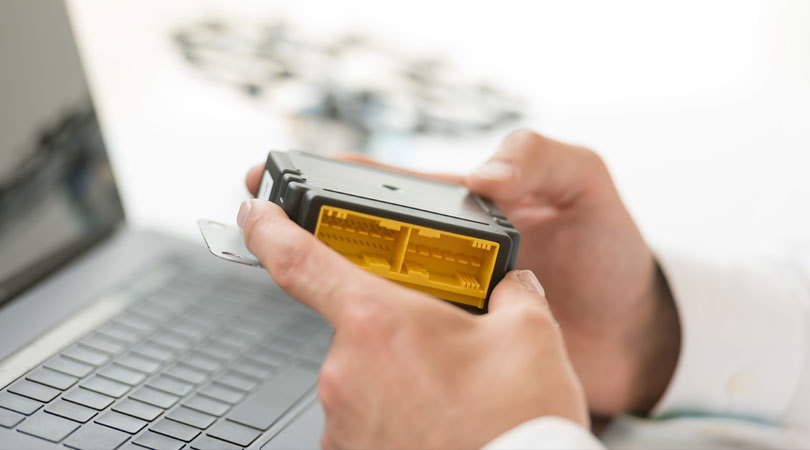
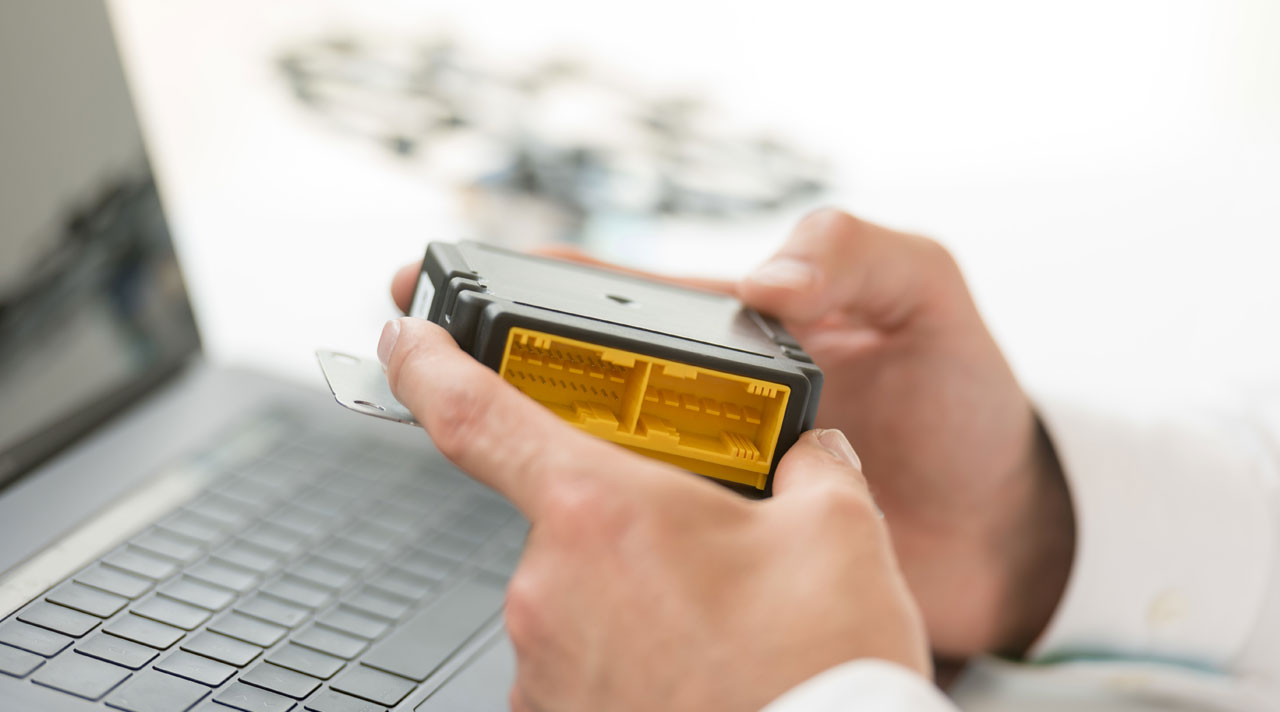
BOSCH TECHNOLOGY TEACHES CARS TO FLY
Sensor box for air taxis
>> Study forecasts 1 billion flights in flying taxis in 2030.
>> Bosch sensor box makes it possible to control flying taxis with precision.
>> Sensor solution from Bosch offers economic advantages by using production-tested components from the automotive sector.
Stuttgart, Germany– With traffic jams a common occurrence in the world’s cities, frustrated drivers sometimes find themselves looking to the heavens for a little help from above. A few years from now, the skies could in fact offer a tangible solution. The Boston Consulting Group predicts that people around the world will take 1 billion flights in air taxis in 2030, once sharing services have also established a presence on fixed routes above the ground. What is more, most of those air taxis will be capable of operating without a pilot. Bosch is working on state-of-the-art sensor technology to make these flights especially safe, comfortable, and convenient. “The first flying taxis are set to take off in major cities starting in 2023, at the latest. Bosch plans to play a leading role in shaping this future market,” says Harald Kröger, president of the Bosch Automotive Electronics division. To help it achieve this goal, Bosch has discovered a gap in the market. Conventional aerospace technology is too expensive, bulky, and heavy to be used in autonomous flying taxis. However, modern sensors that are also used for automated driving or in the ESP anti-skid system could have the potential to bridge this gap. That is why a team of engineers has combined dozens of sensors to create a universal control unit for flying taxis.
"The first flying taxis are set to take off in major cities starting in 2023, at the latest. Bosch plans to play a leading role in shaping this future market. ” Harald Kröger, president of the Bosch Automotive Electronics division - Bosch technology for flying taxis
Featuring Bosch sensors already in use in production vehicles, the universal control unit is designed to ensure the ability to determine the position of the flying taxis at all times, allowing them to be controlled with precision and safety. Acceleration and yaw-rate sensors that accurately measure the flying vehicles’ movements and angle of attack, for example, provide the necessary data. Unlike current sensor systems in the aerospace sector, some of which cost tens of thousands or even several hundred thousand euros, Bosch can make use of its solution for a fraction of the cost. That is because the company uses production-tested sensors that Bosch has already been developing and manufacturing for the automotive industry for many years. “Through our Bosch solution, we aim to make civil aviation with flying taxis affordable for a wide range of providers,” says Marcus Parentis, the head of the technology team at Bosch in charge of the control units behind the electric light aircraft. What is more, the Bosch sensors are especially small and lightweight. Flying taxi manufacturers can easily install the Bosch sensor box into their air vehicles using the plug-and-play principle.
“ Through our Bosch solution, we aim to make civil aviation with flying taxis affordable for a wide range of providers. ” Marcus Parentis, the head of the technology team at Bosch in charge of the control units behind the electric light aircraft
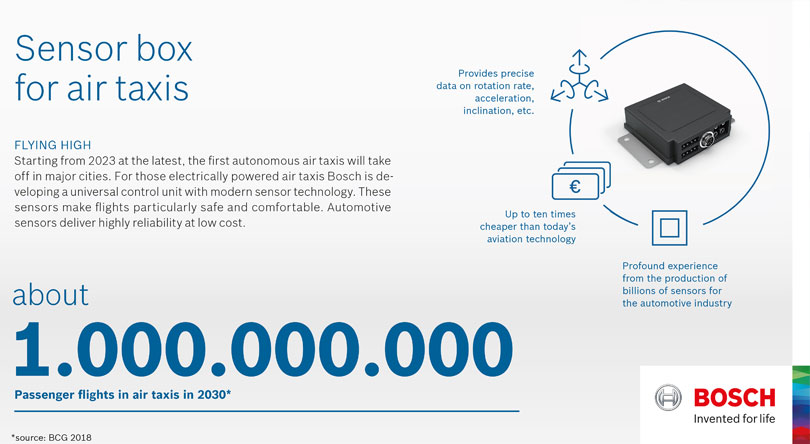
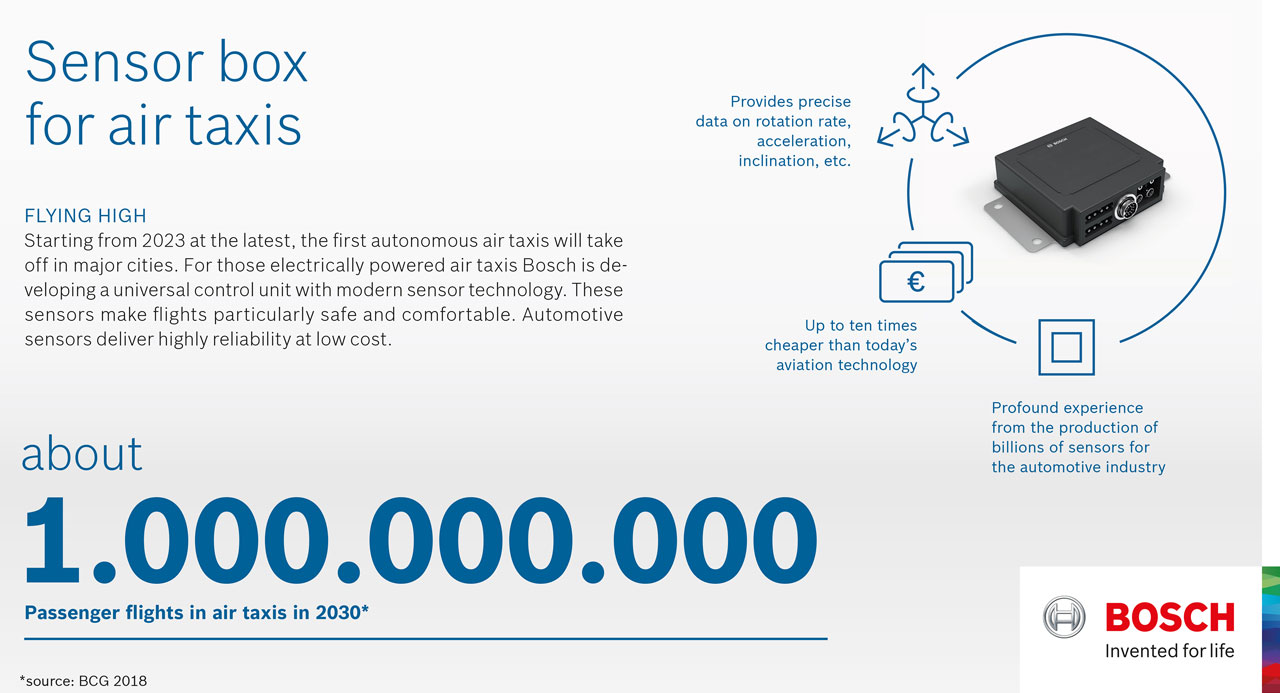
Shared mobility in the air: 1 billion flights in flying taxis in 2030
The market for flights using electric air taxis in cities is set to see substantial growth in the years ahead. Test flights are scheduled to begin in cities such as Dubai, Los Angeles, Dallas, and Singapore in 2020. Experts expect commercial operations to begin in 2023. Although pilots will probably be on board at first, the light aircraft could start flying autonomously over the roofs of major cities as early as 2025, controlled by staff on the ground. By that time, roughly 3,000 flying taxis will be in operation worldwide, according to Roland Berger. That number will increase to 12,000 by 2030, with just under 100,000 flying taxis taking to the skies by 2050. Consultants from Morgan Stanley estimate that the market for flying taxis could even reach 1.35 trillion euros (1.5 trillion USD) by 2040, extending beyond the United States and southeast Asia to include large and medium-sized cities in Germany as well. In regions such as the Ruhr valley, the Frankfurt Rhine-Main metropolitan region, and the Munich/Augsburg/Ingolstadt metroplex, they have the potential to significantly speed up travel over short and medium distances. Bosch’s Marcus Parentis also believes in the growing market opportunities. “We are talking to air taxi manufacturers from the aerospace and automotive industries, as well as with start-ups that build air vehicles and are looking to provide sharing services,” Parentis says. “The question isn’t whether flying taxis will become reality, but when.”
Additional questions and answers
What kind of technology does Bosch provide?
The sensor box is equipped with MEMS sensors. The abbreviation MEMS stands for microelectromechanical systems. Bosch developed the first MEMS sensors for vehicles over 25 years ago. In vehicles, they supply control units with data about whether the car is currently braking or accelerating, and lets them know the direction in which the vehicle is traveling. The Bosch sensor box for flying taxis is equipped with acceleration sensors that measure the movements of the aircraft. Built-in yaw-rate sensors measure the flying vehicle’s angle of attack, while magnetic field sensors gauge its compass heading. The package also includes pressure sensors, which use barometric pressure to measure altitude and dynamic pressure readings to determine the vehicle’s current speed.
To whom is Bosch supplying the sensor box?
Bosch is in contact with a wide range of players in this field, from air taxi manufacturers to start-ups that are looking to build air vehicles and provide sharing services. As with any new technology, there is currently a multitude of different concepts on offer. At the present time, it is hard to say which concept will come out on top. Bosch’s plug-and-play control unit fits in any flying vehicle.
What makes flying taxis an alternative?
Flying taxis offer a new way of avoiding traffic jams in major cities: by taking to the air. That makes them an additional alternative for getting from A to B quickly in tomorrow’s urban areas. “Compared to today’s means of transportation, flying taxis save time on trips of 10 kilometers or more, with a maximum range of up to 300 kilometers,” Parentis says.
How much will flying taxis cost?
Depending on the concept and number of passengers carried, a flying taxi will cost around 500,000 euros. As a result, automated and electric air vehicles offer advantages, especially for sharing solutions. Still, a flying taxi costs far less than a comparable helicopter equipped with today’s technology. That is why it is important for suppliers to provide reliable technology that is not only lightweight and easy to install, but also offers an economic advantage compared to traditional aerospace technology. “That’s where our MEMS sensor box comes in. Through our Bosch solution, we aim to make civil aviation with flying taxis affordable for a wide range of providers,” Parentis says.
